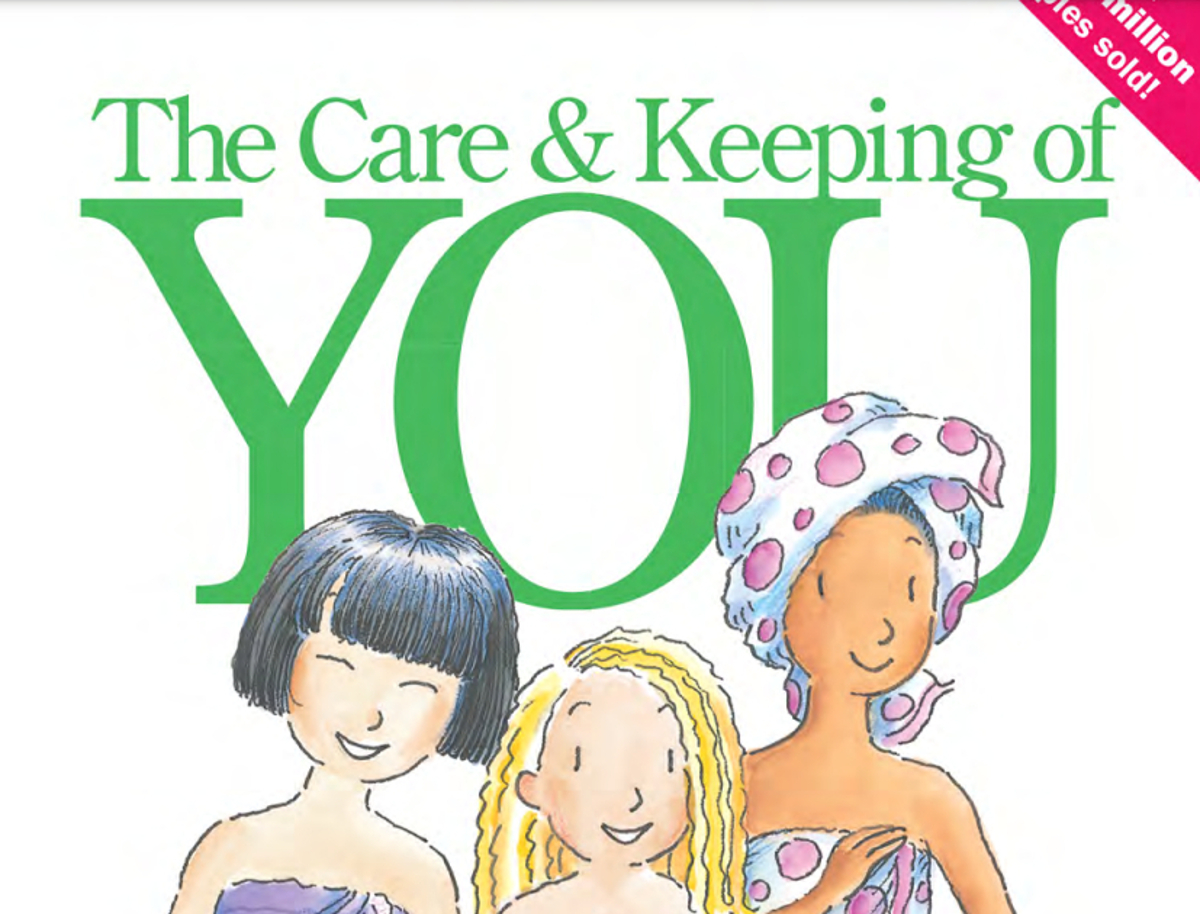Going through puberty is a mystifying and stressful time for many kids. The changes to your body seem to come at a rapidly but also at a snails pace, all at once. Some people hit milestones early. Others are late bloomers. There’s no hard and fast guide to knowing just how your body will change. But, one book took on the task for young girls: The Care & Keeping of You.
‘The Care & Keeping of You’
My mom wasn’t really the type to sit down and talk about the great change with me, so she bought me this book instead. What struck me first about the book was the simple illustration style. The cover features girls of all heights, sizes, and races standing together. They all are wearing bath towels and smiling, an inviting look into what the book would hold.
From what I remember about the book, the title is pretty apt. It covered your body parts and how they’d change, menstrual cycles and products, and more. There was even a section on identifying eating disorders. The book, though slim, was a pretty exhaustive guide on things pre-teen girls wanted and needed to know. It was, as some critics have pointed out, lacking in information about sexuality. This might appeal to some parents, but I and some friends came out soon after we had our first periods.
This is to say that omitting sexuality from the book was a crucial error. Many young girls are already asking those questions years earlier. Other critics have also pointed out the language around food and diet is a little outdated. All that aside, I still have fond memories of reading the book. When it came to period talk, I found that the book’s diagrams and step-by-step instructions were really helpful and detailed.
The book’s cultural impact
I had to do a little internet sleuthing to find this, but I remember very clearly a section in the book where the text instructs readers to check out their vulva. They specifically encourage you to get a hand mirror, place it between your legs, and explore around. Mattel has a PDF of the book available online that has scrubbed this part out, but I remember, and so do many queer friends.
What was so scary about this was that no one, not even doctors, had said this was something we should do. That part of the body was shrouded in mystery, best left up to the imagination. Encouraging young pre-teens to explore it was, for me, taboo. I can only imagine this section was removed from online editions of the book for that same reason. Outside of periods, you just aren’t supposed to be curious about your vagina and vulva.
The book has found its way onto the New York Times Bestseller List multiple times. Many writers have gone on to opine on its impact, especially during this current anniversary. I read it and many other people my age have as well; it was a cultural touchstone for anyone going through puberty around the early 2000s.
Why it matters
The book, written by Valerie Lee Schaefer, used focus groups of pre-teen girls to figure out just what they wanted to know. That’s what made it a popular gift for girls back then. It established a relationship between you and your body, and gave parents a convenient out. They didn’t have to sit you down and explain it all to you, that’s what the book was for.
Conversations about the body were already awkward enough. Having a third party explain things to you in a casual, friendly tone was so much easier. Schaefer herself says she wanted to approach the book with the tone of a “cool aunt” and as I scroll through the PDF available online, she did a pretty good job. The book has since been updated with two more versions: The Care and Keeping of You 1: The Body Book for Younger Girls, and The Care and Keeping of You 2: The Body Book for Older Girls, a sequel intended for older girls.
Of course, a single book released in 1998 isn’t going to cover all of the questions and fears of girls then, or girls today. What I think the book did successfully was get you curious about your body. Aside from parts in the section about food and weight gain, it approached you in a familiar, friendly voice and tone. The book encouraged you to want to know more about how you were changing. That was a welcome change from the way parents and teachers talked about growing girls.
(featured image: screenshot via Mattel)










Published: Aug 30, 2023 02:53 pm